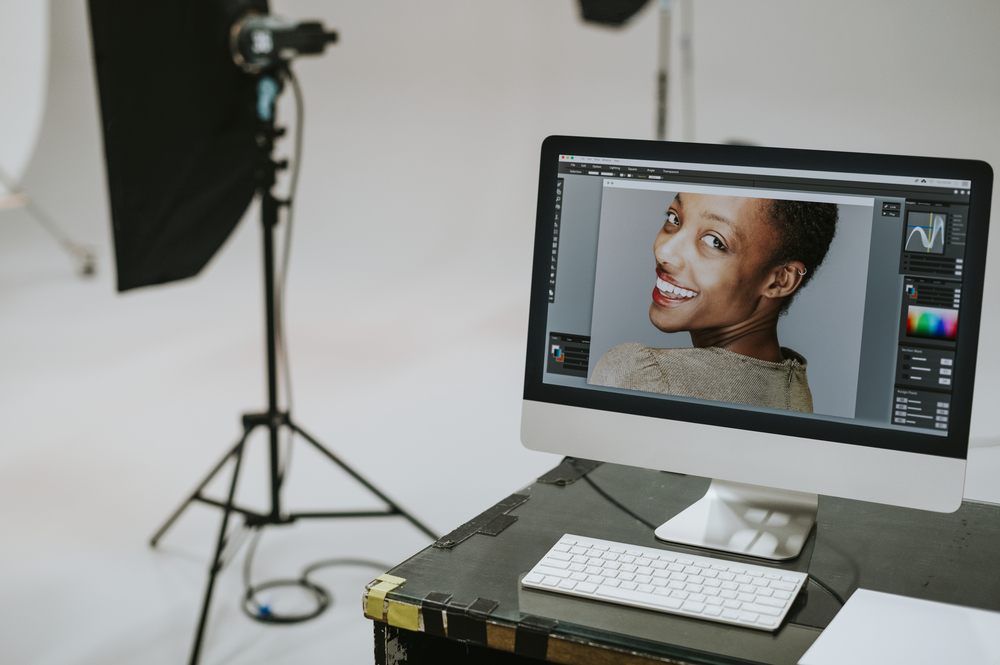The Ethical Side of Photo Retouching: Must Read for Photographers
Each one of you has looked at a photo, contemplated, and debated on a few tweaks here and there. Photo retouching is even more so integral for a photographer. Part of their job depends on it. Lately, opinions are split in two about photo retouching approaches. Some people don’t see any issues in touched-up photos unless they are done well, while others believe that there’s no place for photo retouching in the modern world.
Which team will eventually win the debate? Which arguments are the strongest? Or, maybe, there is a golden middle that would allow brands to follow through with their aesthetics without upsetting a sensitive audience?
If you still have not decided on your own opinion on photo retouching and would like to delve into the discussion, here’s an overview of the subject and six valid reasons for and against photo retouching.
Difference between editing and retouching
Although recently being a hot topic for discussion, photo retouching as definition still requires some explanation. Those who have just started their photography careers or did not face the necessity to retouch photos might think that editing and retouching are synonyms. In fact, these notions don’t have that much in common, even though they are both a part of post-processing.
Editing, or slight enhancements of images, is often the first post-processing stage, during which the original image is enhanced or altered. Photographers change brightness and contrast, crop and resize, add or reduce warmth, work out the white balance, and make other color adjustments. The extent to which a photographer edits the image depends on the initial goal.
Photo retouching, in turn, is the last step of post-processing. It implies removing image imperfections before presenting it to the clients, publishing or printing it. Erasing fingerprints or scratches that were acquired by a product during the shooting are the most common adjustments, for instance. Photo retouching may also be used to highlight and communicate those object properties that cannot be transmitted by a camera: glitter flashes or color saturation.
Ideally, these are subtle changes that you won’t even notice until you’re specifically looking for a difference between the original photo and the retouched one. Yet, photographers quite frequently polish up the photo and the object on it beyond recognition, provoking the controversies in the field and arguments among clients.
Reasons to go with slight and extreme photo retouching
Removing random or temporary defects
Do you know the difference between good and bad photo retouching? The first one removes random and temporary imperfections that might not have been in the image or became too visible because of the lens or camera settings. Meanwhile, the second one adds defects that later become an issue.
Imagine the situation. You’ve planned a shoot for a stock photography platform, booked a studio and paid the rent. Everything is ready to go, except for a model who got an allergy just before the shoot and is covered with spots head to toe. Unless you have an opportunity to immediately find a new model or postpone everything for later, you have to shoot. In this case, the best way out is to remove these temporary and unnecessary defects during retouching.
Usually, good photo retouching is almost invisible. If all photographers or editors did not become too obsessed with it, there wouldn’t be a common request to ban it.
Raising one’s confidence
Photo retouching is actually an effective way to raise self-confidence. This is common in social media now, because apps such as Facetune are affordable and accessible for non-photographers alike.
Of course, this aspect has negative implications, but if a person is more self-confident and happy with touched-up photos, there’s no reason to refuse from retouching. The same can be said about makeup and hair done to hide temporary imperfections or clothes ironed to give them a better look. If the cosmetic and other real-live adjustments are right, why is photo retouching so wrong?
Again, the only problem here is the amount of retouching. Being more of a moral and ethical issue, celebrities and influencers who retouch their images should definitely notify their audiences about it. Perfectly polished images bring false ideas to the masses. For instance, looking at those photos, teenagers start to doubt in their natural beauty, resort to extreme measures like diets or even surgery, and get depressed when they don’t see the awaited results.
Getting artistic expression
Photo retouching can also be used as a tool for artistic expression for a photographer or an editor who has the desire to experiment or is simply a fan of Photoshop. Whether greatly retouched photos are relevant or not depends on the outlet. Meanwhile, retail and media are not the best places for retouching experiments, while stock photography platforms, personal or creative portfolios are more fitting to do so.
In addition, the traditional economic formula has already been changed by those hundreds of millions of images that you can find on the Internet. The new strategy is: if there’s an appealing offer, there will be a demand.
Reasons against using a photo retouching
Going authentic
Authenticity is one of the biggest photography trends that allows not only to conquer the hearts of a contemporary audience but also to successfully sell more stock images. Perfect visuals are no longer the key to success. More and more celebrities and influencers refuse from both editing and retouching, as people are getting better at detecting photoshopped files. The audience wants to see real life and is eager to discover the whole diversity of quirks and inborn imperfections.
The most prominent example is the fashion industry, where brands are boycotted for showcasing unrealistic and over-retouched photos. Jezebel, a supposedly feminist site, even has a rubric called “Photoshop of Horrors”. It features epic photo retouching fails. For example, there’s an article about the fingerless daughter of Kate Moss in Vogue, a copy on how brutally Moschino “amputates” model’s leg, as well as an offer of $10,000 for the unretouched Vogue’s photoshoot of Lena Dunham.
These cases are very related to why authenticity is a trend and a valid reason to go against photo retouching because it’s important to be conscious of the implications even in small details like editing and retouching photos.
Being honest
We’ve already mentioned that photo retouching raises a lot of ethical and moral issues, and one of them concerns the honesty of a brand before the client. Sometimes, retouched photos communicate a false message, making a company or a person appear as if they’re lying to their audience. To clarify the statement above, here’s a situation for a better insight into the problem.
You’ve ordered some clothes online and have been eagerly waiting for the delivery. You’ve already imagined how handsome or beautiful you will look but when the package arrived, reality did not meet your expectations. The quality was not so good and it did not fit you as you thought it would. The initial expectations were too high and as a result, you (as a customer) are very upset. Sure, you returned the piece and got your money back, but the sediment remained.
These situations are frequently repeated and should serve as a powerful incentive for brands to refuse from photo retouching. They should also remember that honesty is the best policy and failing to deliver may spoil all marketing efforts and a reputation built over the years.
Being responsible
The last strong argument against photo retouching is the responsibility before an audience. Whether your brand has a thousand or a million of subscribers, you are still responsible for the message you’re communicating.
The most revealing are examples of the many cases of depression and anxiety in teens. Receiving wrong messages from influencers, media and brands, youngsters start to think that something is wrong with them.
For instance, girls get exhausted by diets, aiming to get those unrealistic bodies that over-retouched Victroria’s Secret models have along with many other brands spreading the same messages. Moreover, nobody’s telling them that curves, spots or wrinkles are totally natural, common and beautiful because they make you so unique. Unsuccessful attempts to lose weight or aim for unrealistic body standards can lead to frustration, anxiety, apathy, and other more serious disorders.
For this reason, brands and people who retouch photos should realize the responsibility they have. If they are not thoughtful and responsible for the kind of retouching that also communicates their message, likely there will be outrage. If more evident retouching is required, they should at least inform the audience that particular images have been subject to adjustment, do not correspond to reality, and should be perceived as artistic pieces.
Although it may seem like a heated discussion around photo retouching, the biggest consequences are with younger generations because they’re more prone to influence on social media and other mediums. The stance you choose to take on photo retouching is a personal matter. The only thing that can be said for sure is that photo retouching is food for thought for both brands, their audiences, and the professionals behind the camera that have a say.












